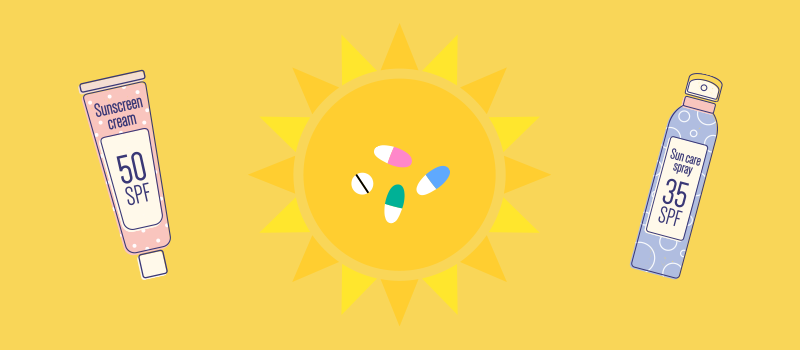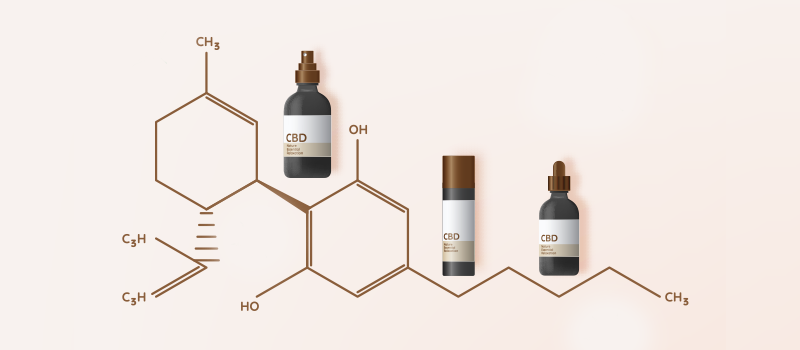What’s the Buzz
The Bee Healthy Blog
Erysipelas vs Cellulitis Skin Infections: What's the Difference?

Cellulitis and erysipelas are two types of skin infections that can develop due to bacteria entering the body through skin breaks or skin lesions. A cellulitis skin infection is not contagious, whereas erysipelas is a mild skin infection of the upper subcutaneous tissue, which can be contagious. While both infections can be difficult to differentiate, there are key differences between them. Continue reading to learn more about the differences between cellulitis and erysipelas.
What is erysipelas?
Erysipelas is a superficial infection of the subcutaneous tissue (the layer just beneath the skin’s surface). The same bacterium responsible for strep throat, called group A Streptococcus, usually causes erysipelas. Erysipelas infections can cause large, raised red patches on the skin. Some may also experience systemic illnesses such as blisters, fevers, and chills in conjunction with this condition. Erysipelas frequently affects the face and legs.
With antibiotic treatment, Erysipelas typically gets better.
What is Cellulitis?
Cellulitis is a bacterial skin infection that affects the subcutaneous tissue of the skin as well as the deeper tissues. It is usually caused by Staphylococcus aureus and Streptococcus bacteria entering the body through a skin lesion, cut, wound, or break in the skin barrier. Common symptoms of cellulitis include redness, swelling, pain, deeper infection, and warmth in the affected skin. If left untreated, cellulitis can spread and lead to more severe complications. Prompt medical attention and the use of prophylactic antibiotics are typically required to treat cellulitis effectively.
What Causes Erysipelas vs. Cellulitis?
Erysipelas Causes
The group A Streptococcus bacteria break through the skin's most protective barrier to bring on erysipelas. These bacteria are normally harmless and found living on your skin and other surfaces. However, if they enter the body through a wound or cut, they can cause a severe infection.
Erysipelas is a rare but possible complication of skin conditions like athlete's foot and eczema, both of which can cause breaks in the skin. Erysipelas can also occur when bacteria spread from an infection in the nose and throat to the nasal passages after the infection has already developed.
Other risk factors for erysipelas include the following:
- Insect bites
- Surgical incisions
- Skin ulcers
- IV injection sites of drug abusers such as heroin
- Swollen legs because of systemic problems like diabetes and heart failure.
- Certain skin conditions like psoriasis
Who is likely to contract erysipelas?
Erysipelas is more likely to occur in younger children between the ages of 2 and 6, as well as in adults over 60. Patients who are elderly and have compromised immune systems, along with postoperative fluid retention, are at the highest risk of infection.
Cellulitis Causes
Numerous bacteria that enter the skin through breaks in the surface, like a skin lesion or leg ulcer, can cause cellulitis. Among other bacteria, Staphylococcus aureus and Streptococcus (strep) frequently cause cellulitis infections.
Other types of skin injuries that can result in cellulitis include the following:
- Surgical wounds
- Insect bites
- Cuts
What are cellulitis's risk factors?
Many different risk factors raise someone’s likelihood of developing cellulitis. For instance, if you have eczema or athlete's foot, you have a greater risk of developing cellulitis. These conditions cause skin cracks, allowing bacteria (e.g. Staphylococcus aureus) to enter the body. A weakened immune system can contribute to an increased likelihood of developing cellulitis.
The following are additional risk factors:
- Obesity
- Lymphedema (swelling in your legs or arms)
- Diabetes
- A cut, scrape, or other injury to the skin
How do Symptoms Differ?
Unlike cellulitis, erysipelas causes a raised skin lesion with a clear line marking its edge. Erysipelas typically affects the nose and cheeks when it manifests on the face.
Lymphangitis is an inflammation of one or more vessels of the lymphatic system that typically only affects one side of the body. Lymphangitis, a condition characterized by inflammation, is more commonly associated with cellulitis infection.
Common symptoms of both infections include the following:
- Red spots
- Skin dimpling
- Chills
- Fever
- Swollen glands
- Blisters on the affected area
- Feels warm to the touch
- Tenderness and pain
- General tissue swelling
The complications associated with cellulitis and erysipelas are typically the same. Both infections can enter the bloodstream and the lymph nodes, allowing them to spread throughout the body, leading to further complications. These include:
- Gangrene or tissue death
- Venous insufficiency
- Abscess formation
- Inflammation of lymph vessels
- A bone infection
- A blood infection
- Chronic leg edema
- Lymphangitis
- Thrombophlebitis
Extremely rare but potentially life-threatening systemic or local complications include:
- Streptococcal toxic shock syndrome
- Endocarditis (inflammation affecting the heart)
- Acute glomerulonephritis (inflammatory disease of both kidneys)
- Necrotising fasciitis (rapid destruction of the overlying tissues)
- Septicemia (blood poisoning)
- Venous insufficiency
- Compartment syndrome
- Osteomyelitis (inflammation of the bone or bone marrow)
How is Erysipelas treated?
While the majority of patients with erysipelas can receive treatment at home, hospitalization may be necessary for some individuals. Depending on the severity of your condition, your doctor may recommend home remedies, antibiotic therapy, or even surgery as part of your treatment plan.
Home healthcare
To alleviate swelling, it is typically necessary to elevate the affected area of the body higher than the rest of the body. For instance, if the condition affects your leg, you should get as much rest as possible while keeping the affected leg elevated above the hip.
It’s also important to consume enough fluids, frequently stand up and move around, and get plenty of rest.
Antibiotics
Antibiotic therapy, such as penicillin, are the most commonly used medicines to treat erysipelas. For cases of erysipelas that are not severe soft tissue infections, doctors may prescribe prophylactic antibiotics that can be taken orally at home for at least seven days.
Typically, severe erysipelas is treated in a hospital setting, where antibiotics are administered intravenously (IV). Hospital care may also be necessary for very young children and adults of advanced age.
If athlete's foot is the underlying cause of your erysipelas, you may be advised to use antifungal medication.
Surgery
Surgery may be necessary in extremely rare circumstances, such as when erysipelas has rapidly advanced and caused healthy tissue to die. It may be necessary to undergo a surgical procedure to remove the dead tissue.
What is the prognosis for a patient with erysipelas?
Intravenous antibiotics will be able to successfully treat erysipelas in the majority of patients within a week. However, the skin may take over a week to return to its normal state, and the affected areas may experience peeling. Individuals with recurrent erysipelas may need to take preventive intravenous antibiotics for an extended duration as part of their treatment.
Without treatment, you put yourself at risk for a number of complications, including the following:
- Bone and joint infections
- Infected heart valves
- Blood clots
- Abscess formation
- Sepsis
- Gangrene
- Leg ulcers
When erysipelas infections are close to the eyes, there is an increased risk of the infection spreading to the brain.
Erysipelas prevention
Erysipelas cannot always be avoided, but there are certain steps you can take to lessen the likelihood of contracting the disease:
- Try not to scratch your skin.
- Use moisturizers to prevent your skin from drying and cracking.
- Ensure that any skin problems, such as eczema, are effectively treated.
- Treat athlete's foot.
- Always keep wounds clean.
Be sure to keep all follow-up appointments with your doctor to further reduce the risk of developing erysipelas in the future.
What treatment options are available for cellulitis?
As part of the standard treatment course, uncomplicated cellulitis infection is typically treated with oral antibiotics for a minimum of five days or with intravenous antibiotics (IV). Your doctor may also recommend painkillers for you to take.
Get some rest and see if your symptoms get better. In addition to this, elevating the affected limb above the level of the heart can assist in the reduction of swelling and prevent venous insufficiency.
Severe cellulitis should heal without further medical intervention after seven to ten days of treatment with intravenous antibiotics. If your infection is worse, you might need to undergo treatment for a longer period of time.
But be sure to finish the full antibiotics regimen your doctor prescribes, even if your symptoms improve after a few days.
When to consult a physician?
Seek medical attention if you:
- Feel no clinical improvement after three days of taking antibiotics.
- Observe a worsening of your symptoms (Treatment failure).
- Have recurrent infection.
- Develop a high-grade fever.
The following conditions may necessitate hospitalization and parenteral antibiotic treatment:
- Treatment failure
- Low blood pressure
- High-grade temperature
- Compromised immune system due to other diseases such as diabetes mellitus
- Chronic Venous insufficiency
- Recurrent cellulitis
- Surgical emergency
- Overlapping fungal infection
Rarely, abscess formation will occur, which will require draining by a a trained medical professional using a local anesthetic administered to the affected area. After that, the surgeon will make a tiny incision in the abscess to create a drainage hole.
After the incision, a dressing is applied to facilitate the healing process. There may be a thin scar after this.
The best way to prevent cellulitis
Take the following preventative measures to avoid cellulitis, especially if you have poor circulation or a condition that makes you more likely to develop cellulitis:
- Wear protective gear while working or playing sports.
- Keep your skin hydrated to avoid cracking.
- Examine your feet daily for injuries or infections.
- Treat skin-cracking conditions, such as athlete's foot, immediately.
- Clean open wounds in the skin immediately, apply antibiotic ointment and cover the wound with a bandage until it has completely healed.
If you suspect that you have erysipelas or cellulitis, it is important to consult a healthcare professional for an accurate diagnosis and appropriate treatment plan. Proper wound care, hygiene, and early medical intervention are crucial for preventing and managing these infections.
References
- https://www.bad.org.uk/pils/cellulitis-and-erysipelas/
- https://www.ncbi.nlm.nih.gov/books/NBK532247/
- https://dermnetnz.org/topics/erysipelas
- https://patient.info/skin-conditions/skin-rashes/cellulitis-and-erysipelas
- https://www.nhs.uk/conditions/skin-abscess/
- https://pubmed.ncbi.nlm.nih.gov/29614180/
- https://www.ncbi.nlm.nih.gov/books/NBK549770/
- https://www.nhs.uk/conditions/cellulitis/
- https://www.sepsis.org/sepsisand/cellulitis/
- https://www.cdc.gov/groupastrep/diseases-public/Cellulitis.html
- https://pubmed.ncbi.nlm.nih.gov/26258910/
- https://pubmed.ncbi.nlm.nih.gov/32284801/
- https://www.cdc.gov/ncbddd/dvt/facts.html












SOCIAL